In many cases, nuts are one of the first things to be eliminated from a renal diet? Why? Because many nuts are high in potassium. What many don’t realize is that there are low potassium nuts that can be included. And in many cases, it’s really about the portion size!
We’ll explain in this article how you can include nuts in a renal diet. It starts by better understanding the potassium content of different types of nuts.
*This article contains affiliate links in which I earn a small percentage of sales at no expense to you. I only ever provide affiliate links for products that I truly believe in and recommend for both myself and kidney warriors. Thank you for your support!
Table of Contents
Low and High Potassium Foods
In order to determine what low potassium nuts are available, we first need to establish definitions of low and high potassium content.
Low potassium foods are generally considered to be under 200 milligrams of potassium per serving.
High potassium foods are generally considered to be foods that are over 200 milligrams of potassium per serving.
Another quick note- all nutrition information is in the edible or shelled amount.
Benefits of Adding Nuts to A Renal Diet
Nuts can be a great addition to a healthy renal diet. Here are some of the reasons why!
Heart Health
Many studies have shown that routine consumption of nuts protects heart health.
The healthy fats like poly-unsaturated and mono-unsaturated fats help reduce the risk of cardiovascular disease and high cholesterol.
Brain Health
The brain benefits from a healthy fat diet, including a diet with nuts.
Studies have shown that adding nuts to the diet can help reduce the risk of developing Alzheimer’s and protect cognitive function.
Gut Health
While nuts are most famously known for their protein and healthy fats, they can also be a great source of fiber!
Our gut relies on getting enough fiber to fuel our gut that helps break down our foods. And many people do not get enough fiber in their diet.
Blood Sugar Control
There have been studies that looked at nuts and diabetes prevention. Those that consume nuts on a frequent basis have had better blood sugar levels.
Low Potassium Nuts
There are quite a few low potassium nuts available! The hardest part will be choosing which one to add to your meal or snack.
Cashews
Cashews have just 160 milligrams of potassium per ounce. An ounce of cashews is about 18 nuts.
Raw cashews are a great base for creamy soups, sauces, and dressings. Roasted cashews can make for a crunchy addition to stir fry and salads, or simply eaten as a filling snack!
Chestnuts
Chestnuts are another low potassium nut. They have only 168 milligrams of potassium per ounce. One ounce of chestnuts is about 3 chestnuts.
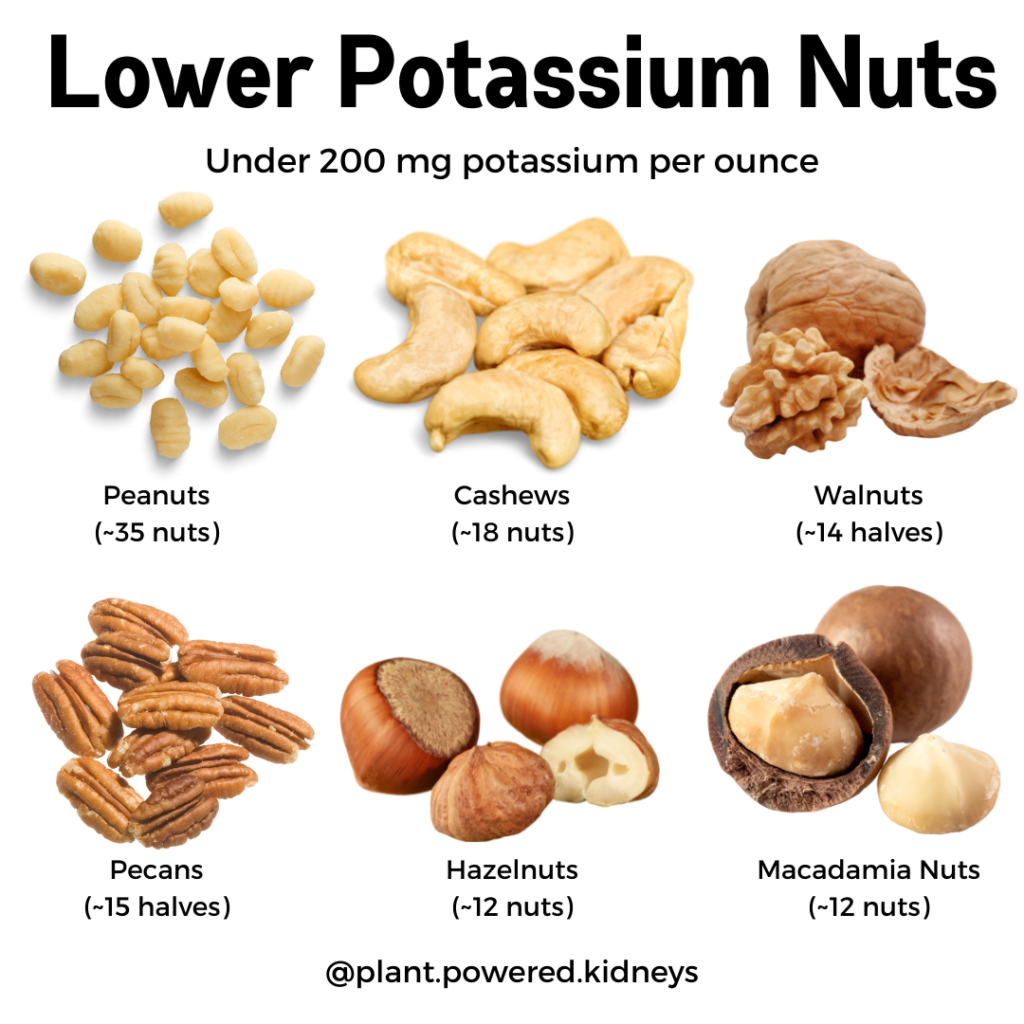
Pine Nuts
Pine nuts, commonly used in pesto, are low potassium nuts too. One ounce of pine nuts has just 169 milligrams of potassium. An ounce of pine nuts is about 167 nuts.
Peanuts
For those that are peanut fans, rejoice! Peanuts are also considered low in potassium with 180 milligrams of potassium per ounce. One ounce of peanuts is about 35 peanuts.
Brazil Nuts
Did you know that just one brazil nut will provide you with your day’s need for selenium? What it won’t provide is your day’s need for potassium.
There is 187 milligrams of potassium in one ounce of brazil nuts. One ounce of brazil nuts is about 6 nuts.
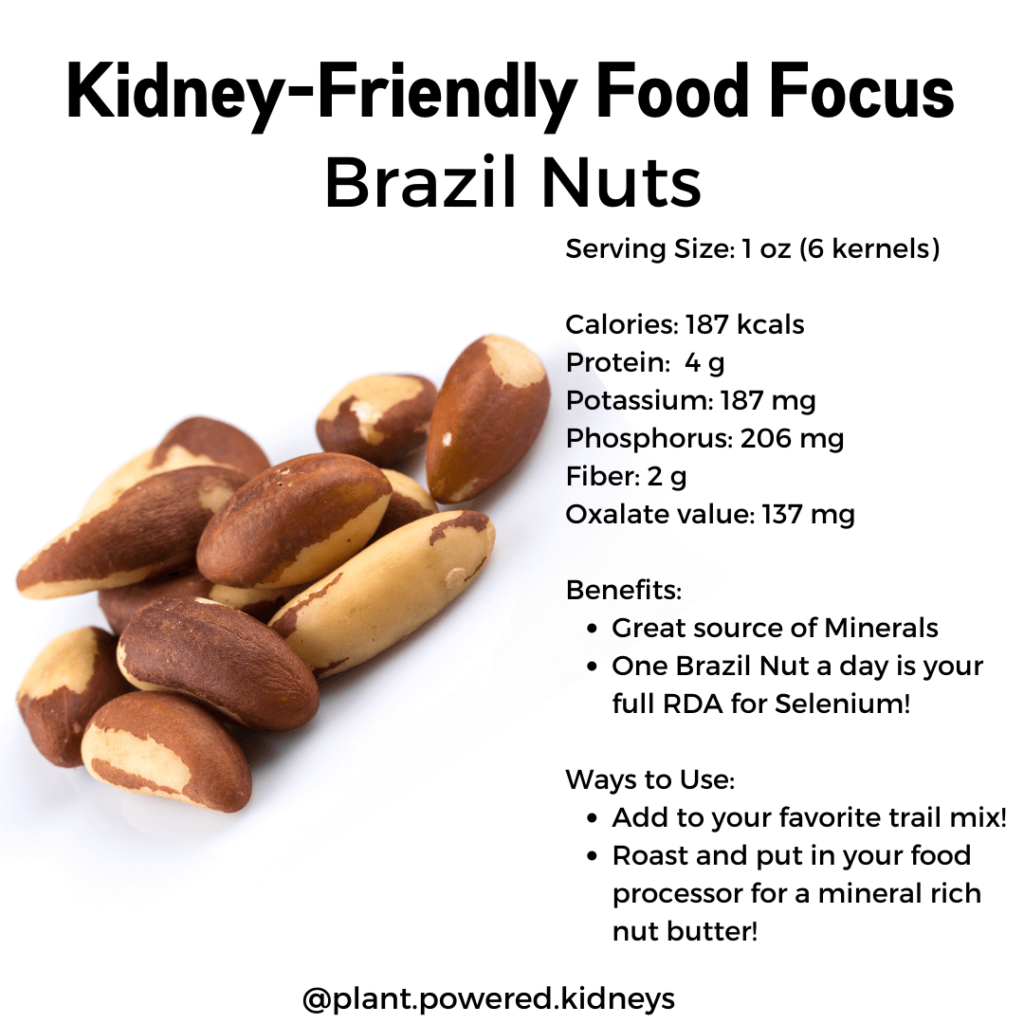
Hazelnuts
Finally, we have hazelnuts. Hazelnuts provide just 193 milligrams of potassium per ounce. And 12 hazelnuts is about what you’ll get in an ounce serving.
Lowest Potassium Nuts
Here are the nuts that are the lowest in potassium.
Walnuts
Walnuts have just 125 milligrams of potassium in a one-ounce serving. A one-ounce serving of walnuts is about 14 shelled walnut halves.
Pecans
Pecans have 116 milligrams of potassium in a one-ounce serving. This is approximately 15 shelled pecan halves.
Macadamia Nuts
Macadamia nuts are the lowest potassium nuts. They provide only 103 milligrams of potassium in one ounce. One ounce of mac nuts is approximately 12 nuts.
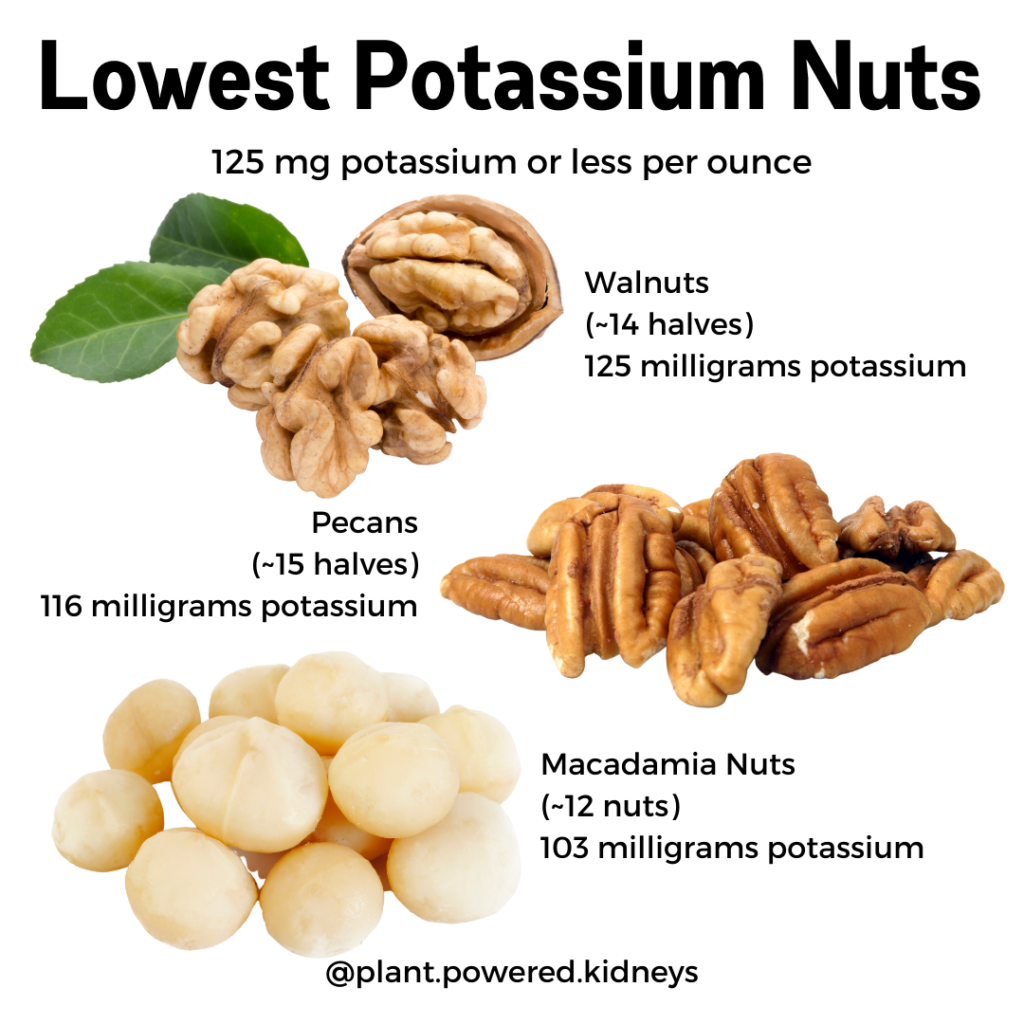
High Potassium Nuts
We do have a couple of nuts that are considered quite high in potassium. They may need to be limited for those on a low potassium diet.
Almonds
Almonds have 202 milligrams of potassium per ounce. An ounce of almonds contains about 24 nuts. They just missed the cut at qualifying for the low potassium nuts!
Pistachios
Pistachios are the highest in potassium. They have 285 milligrams of potassium per ounce. An ounce of pistachios is about 49 nuts.
Remember- the nutrition information here is based on the shelled/edible portion.
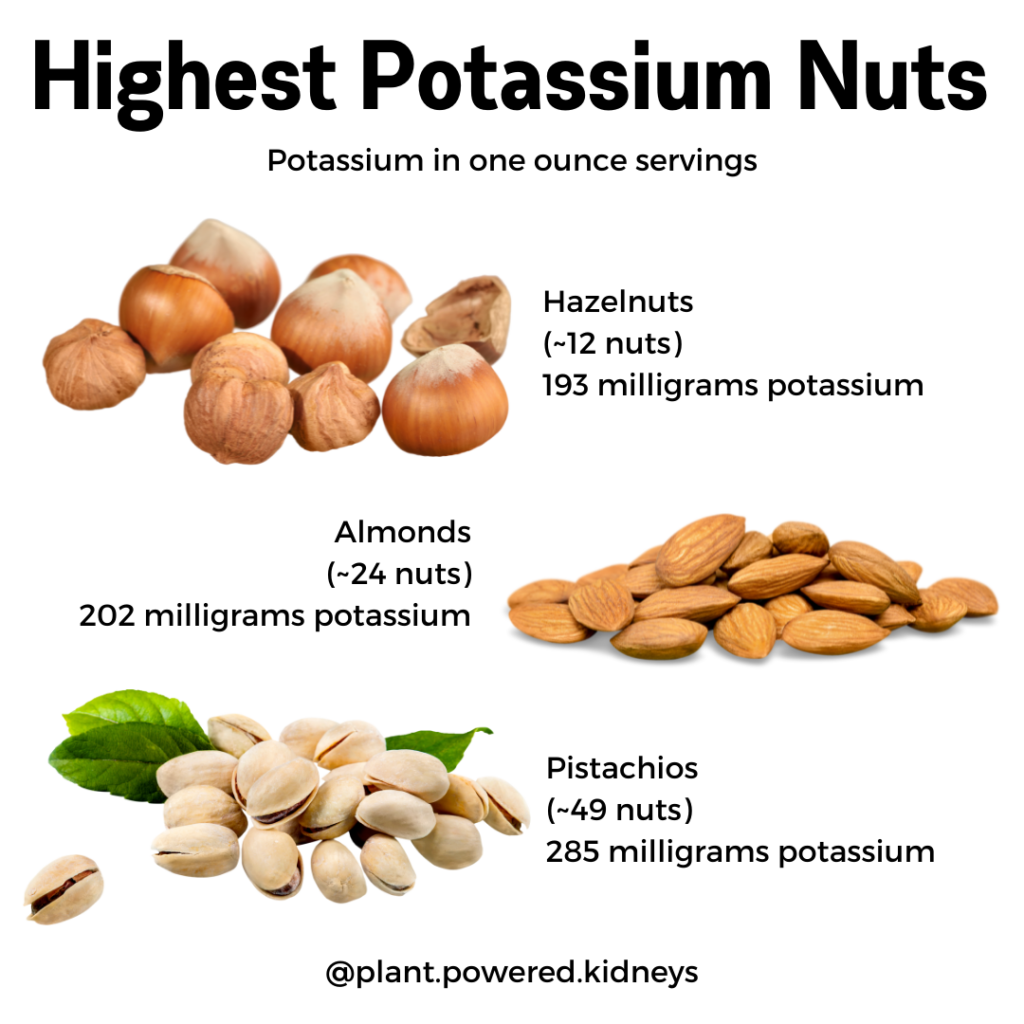
Is the Tiger Nut Good for Kidney Patients?
While they’re called nuts, tiger nuts are not nuts! Tiger nuts are in the tuber family. Other tubers include potatoes, yam, taro, and Jerusalem artichoke.
Tiger nuts are edible, unlike other tubers that benefit from cooking.
You can find them used as flours, oils, and even tiger nut milk.
One ounce of tiger nuts provides 235 milligrams of potassium. This makes tiger nuts a high potassium food.
Potassium in Nuts Chart
Below is a chart of the potassium content of different nuts. We have included columns for both a 1-ounce serving and the standardized 100-gram nutrition information.
| Nut | Potassium (mg) in 1 oz serving | Potassium (mg) in 100g serving |
|---|---|---|
| Almond | 202 | 713 |
| Brazil | 187 | 659 |
| Cashew | 160 | 565 |
| Chestnut | 168 | 592 |
| Hazelnut | 193 | 680 |
| Macadamia | 103 | 363 |
| Peanut | 180 | 634 |
| Pecan | 116 | 410 |
| Pine Nut | 169 | 597 |
| Pistachio | 285 | 1007 |
| Walnut | 125 | 441 |
As you can see, many nuts can be considered part of the renal diet when keeping to a 1-ounce serving.
Nut Serving Size Chart
As mentioned above, the portion of nuts plays a great role in adding it to your diet. The standard serving for nuts is one ounce. But what does an ounce of nuts look like?
Here’s a nut serving size chart for quick reference.
| Nuts (shelled) | Approximate Number of nuts in one ounce |
|---|---|
| Almond | 24 |
| Brazil | 6 |
| Cashew | 18 |
| Chestnut | 3 |
| Hazelnut | 12 |
| Macadamia | 12 |
| Peanut | 35 |
| Pecan halves | 15 |
| Pine Nut | 167 |
| Pistachio | 49 |
| Walnut | 14 |
How to Add Nuts to a Renal Diet
While the nutrient and serving information can be very helpful, it can be hard to see how one can add nuts to a renal diet.
Here are some examples of ways to include nuts in a renal diet.
Sprinkle on salads
Nuts will offer a great texture change and crunch to a salad. Try adding some nuts instead of salty croutons on your next salad!
Mix into yogurt
You may love probiotic-rich yogurts but find them to be boring alone. Add in a sprinkle of chopped pecans or slivered almonds to give some extra intrigue to a kidney-friendly snack.
Make a creamy sauce or dressing
Raw cashews are a very easy addition to a simple creamy base for soups, sauces, or dressings.
Because they’re raw, they don’t provide a very “nutty” flavor, making them an easy addition without changing the flavor.
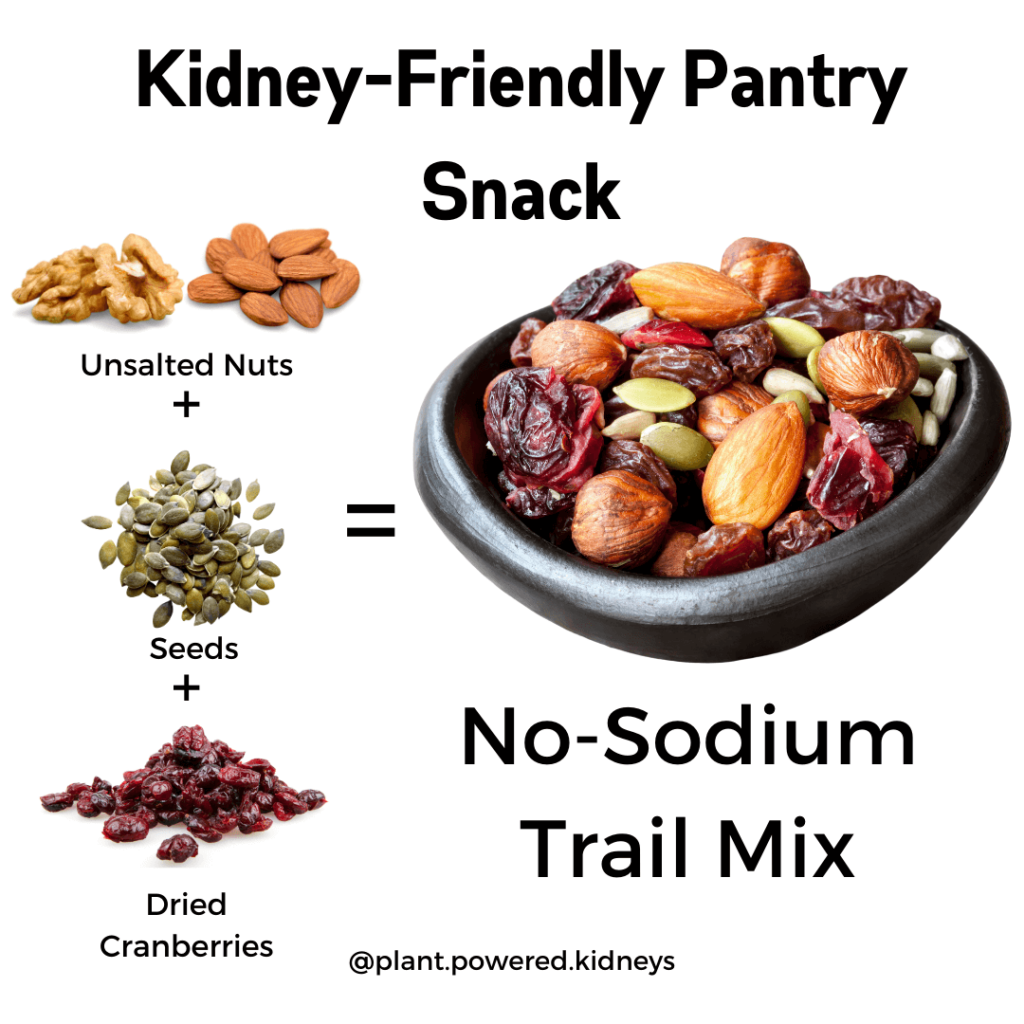
Raw vs Roasted Nuts
Nuts are roasted to increase the crunchy texture by removing some of the water. Dry-roasting nuts does not make significant changes to the overall nutritional value.
There is another type of cooking method for nuts that is oil-roasting. This is where oil, often peanut oil or vegetable oil, is added to the nuts to improve the texture and taste. However, the amount of fat isn’t significantly higher in this type of cooking method.
So nutritionally speaking, there is minimal difference between raw and roasted nuts.
For example, one ounce of raw almonds provides 208 milligrams of potassium. One ounce of roasted almonds provides 202 milligrams of potassium.
What about peanut butter and other nut butters?
Now that we’ve gone over potassium in nuts, what about potassium in peanut butter, almond butter, and other nut butters?
These are packaged foods, meaning there is some processing that occurs when making these delicious spreads. It doesn’t mean they need to be avoided!
What it does mean is that there can be additives like phosphorus, potassium, sodium, and even sugar to watch for.
| Nut Butter | Milligrams potassium per 2 Tbsp serving |
|---|---|
| Peanut Butter, creamy | 208 |
| Peanut Butter, chunky | 238 |
| Almond Butter | 240 |
There are plenty of other nut butters, and they can easily be made at home! The nutrition information on these other nut butters is still limited as potassium has only recently been added to the nutrition information requirements.
This Kevala cashew butter* has just 164 milligrams of potassium per 2 tablespoon (Tbsp) serving.
Nomz hazelnut butter* has 6% DV of potassium (about 280 milligrams) per 2 Tbsp serving.
The pecan butter from Purely Pecans* has 135 milligrams of potassium per 2 Tbsp serving.
Other Nutrients in Nuts
While this article has focused on the potassium content of different nuts, there are other important factors related to nuts that may need to be considered.
Protein
Believe it or not, but nuts also can be high in protein. This is another reason it can be important to limit portions as many with kidney issues follow a low protein diet.
Learn more about the low protein diet here.
On the other hand, protein is important for those on dialysis. Many people who receive this life-sustaining treatment have higher protein needs.
In many cases, protein supplements are often recommended to ensure adequate protein intake.
Learn more about protein supplements for dialysis here.
Fat
Nuts are a great source of heart-healthy fats. Walnuts are known for being a great source of omega-3 fatty acids in particular.
While most nuts have a lot of healthy fats, there are some less healthy fats.
Macadamia nuts are high in saturated fats. Too much saturated fat in the diet has been shown to increase the risk of heart disease, heart attack, and stroke.
Phosphorus
One of the challenges with the renal diet is phosphorus. Nuts are a source of organic phosphorus.
If you are on a low phosphorus diet, it’s important to keep portions in moderation. So while nuts are a source of organic phosphorus, they may need to be limited. Speak with your dietitian about other sources of phosphorus in your diet to see what could be causing higher than normal levels.
Learn more about the low phosphorus diet here.
Your doctor may also prescribe phosphorus binders to help control your phosphorus levels. Learn more about phosphorus binders here.
Fiber
There’s another reason nuts can be so filling and satisfying. They’re loaded with fiber!
Hazelnuts have the highest fiber content, with over 3 grams of fiber per 1-oz serving.
Other nuts also high in fiber (about 3 grams per 1-oz serving) include;
- Almonds
- Pecans
- Pistachios
Sodium
While nuts themselves are typically very low in sodium, many packaged nuts will have added sodium.
Regular mixed nuts can have upwards of 90-100 milligrams of sodium per ounce. The amount will vary depending on the brand and specific product.
This is still considered low sodium per serving. The important thing to remember is the serving size, which is generally listed as 28 grams or 1 ounce.
If you prefer snacking on nuts lightly salted, it may be helpful to buy portioned packs of nuts like these Planter’s 1-oz Salted Peanuts packs*. These are kept to 1-oz servings, which means sodium is only 100mg per bag.
Beware that some of the snack packs are in 2.25-oz servings, which can contribute more than double the potassium content from a 1-oz serving.
Sugar
If you’re a fan of honey-roasted nuts or glazed walnuts, keep sugar in mind.
An ounce of honey roasted nuts can give about 6 grams of sugar. The daily added sugar allowance is 25 grams for women and 36 grams for men.
Check out these honey-roasted macadamia nuts* that are portioned out to 0.5-oz servings. With only 40 milligrams of potassium and 3 grams of added sugar per pack, they make a great sweet snack!
If you have more concerns about sugar because of diabetes, read more about the renal diabetic diet here.
Oxalates
If you have kidney stones and need to limit oxalates, nuts may be something to be wary of.
Almonds are particularly high in oxalates. Other high oxalate nuts include;
- Brazil nuts
- Cashews
- Hazelnuts
- Pine Nuts
The lowest oxalate nuts include pistachios and chestnuts.
Learn more about preventing kidney stones here.
How to Store Nuts
As we’ve discussed, nuts can be a part of a renal diet. But how should you store nuts in your kitchen?
In the Pantry
For easy grab-and-go, nuts can be stored in airtight containers in a cool, dry place.
Nuts have a shelf life of about 4 months in a room-temperature environment.
In the Fridge or Freezer
If you buy nuts in bulk or don’t use very often, it is helpful to split up the package and store portions in the fridge and freezer.
The cold temperatures can help prevent the fat in nuts from oxidizing or going rancid.
Store the nuts in freezer bags or airtight containers. This method will keep nuts for up to 12 months.
Summary
Even though there is potassium in nuts, they can absolutely be a part of a renal diet.
For those that need to follow a low potassium diet, stick to the lowest potassium nuts like macadamia nuts, pecans, and walnuts.
If there’s no need to restrict potassium, try to include some of the high potassium nuts like almonds and pistachios.
Other nutrients that may need to be considered when adding nuts include protein, sodium, and oxalates.
What’s your favorite type of nut to enjoy in a renal diet? Comment below!

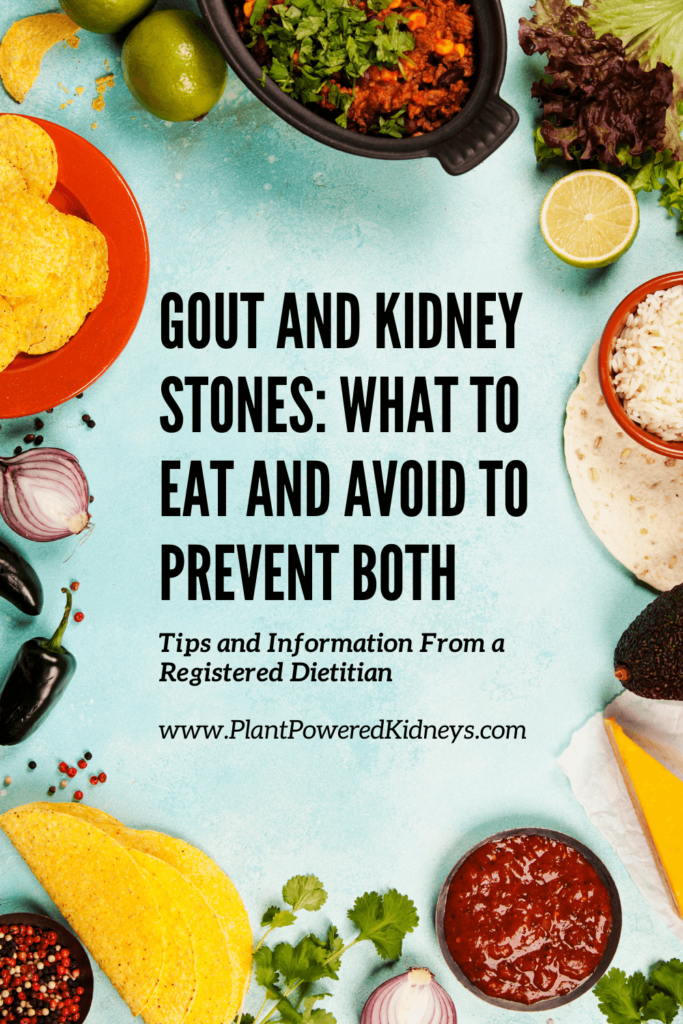
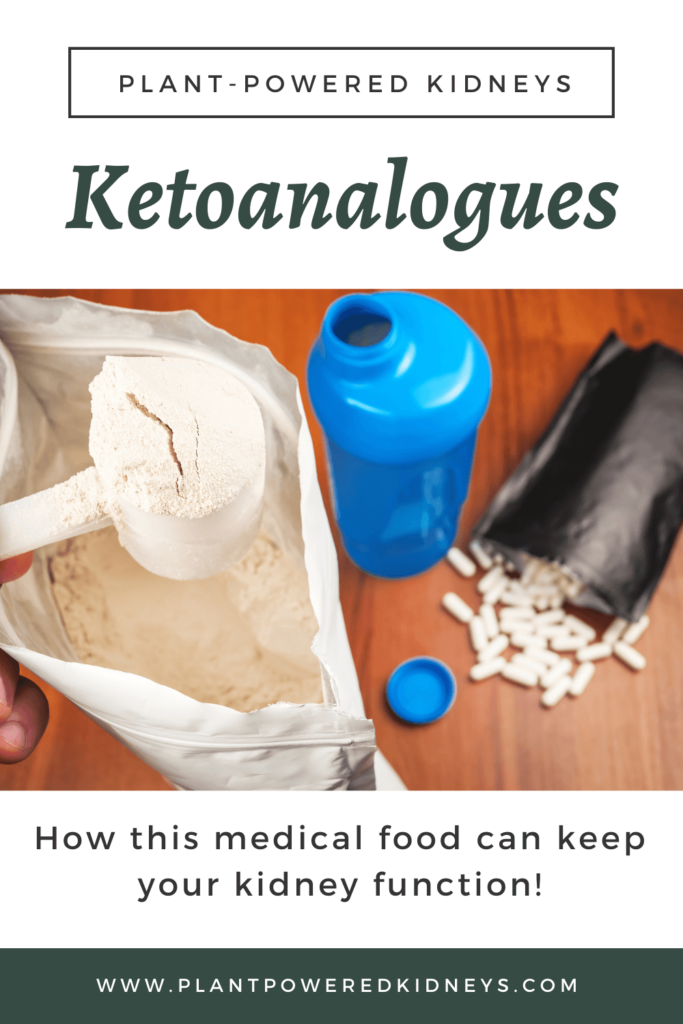

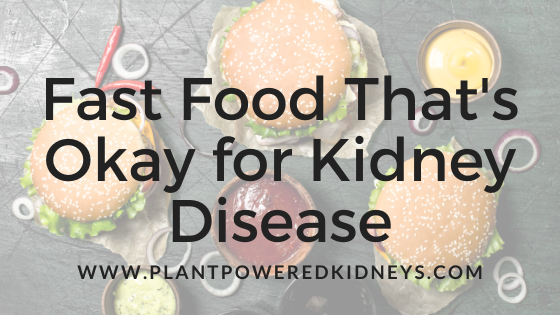
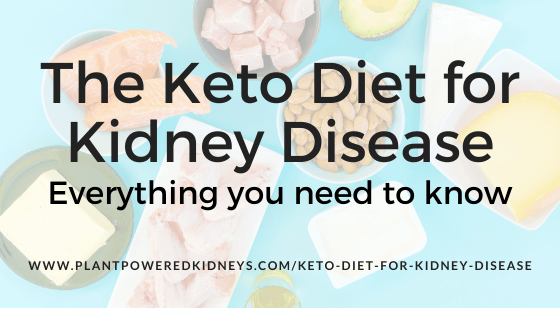
Wonderful Advice. Thank you very muxh.
Thank you for the kind words, Norma! We’re so happy to hear it’s helped. 🙂
Great article and good advice for someone on a renal diet!!
Thank you so much, Reginald! 🙂
I am 77 years old male ,& I am on stage 3 Ckd for 13 years after kidney failure do for hypertension, I eat a lots of verities of raw nuts ,but my potassium & phosphorus are normal , what is the secret.
Sounds like you’re probably doing a lot more kidney-friendly things than you realize! 😉
can potassium be leached from nuts like beans? let them sit in water for 12 hours. thx
Yes, potassium can be leached from nuts. The amount will vary though, and food journals will not be able to track a percent, but if potassium is a concern it may be a good step if making your own nut butter or nut milk. 😋
I rarely comment on blogs … But your piece deserves it. Thank you
What about 1/4 cup of unsalted cashews a day is that alright.
A quarter cup of unsalted cashews has just 178 milligrams of potassium. That means it can fit a renal diet if you want it to 😉.
Hi, Jen thank you for sharing with us , you helping me a lot every day I read something about you post and I like you always answer thank you ,so for me I like pecans and walnuts and I used and everything morning with oatmeal or sometimes with yogurt or salads, I would like to know a recipe for dressing
I’m so happy to hear that, Sandra! Have you checked out our salad dressing article?